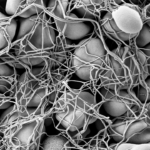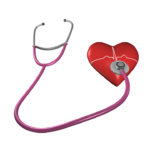 There are many causes for swollen feet which may be minor, temporary or small to notice. While swelling in the foot, leg, and ankle usually doesn’t pose a significant health risk, but it is important to consult your doctor. It usually goes away on its own, but sometimes it can be a sign of a health problem like low protein Read More …
There are many causes for swollen feet which may be minor, temporary or small to notice. While swelling in the foot, leg, and ankle usually doesn’t pose a significant health risk, but it is important to consult your doctor. It usually goes away on its own, but sometimes it can be a sign of a health problem like low protein Read More …
Swelling of Feet and Ankle: Its Causes and Treatment
 There are many causes for swollen feet which may be minor, temporary or small to notice. While swelling in the foot, leg, and ankle usually doesn’t pose a significant health risk, but it is important to consult your doctor. It usually goes away on its own, but sometimes it can be a sign of a health problem like low protein Read More …
There are many causes for swollen feet which may be minor, temporary or small to notice. While swelling in the foot, leg, and ankle usually doesn’t pose a significant health risk, but it is important to consult your doctor. It usually goes away on its own, but sometimes it can be a sign of a health problem like low protein Read More …
 World Thalassemia Day World thalassemia day on 8th of May was established by the world health organization, it is observed every year to increase the awareness among the public about the disease, prevention and measures to avoid its transmission. Around 3.4% of the people are the carrier of the thalassemia and around 7000 to 10,000 children are born with thalassemia
World Thalassemia Day World thalassemia day on 8th of May was established by the world health organization, it is observed every year to increase the awareness among the public about the disease, prevention and measures to avoid its transmission. Around 3.4% of the people are the carrier of the thalassemia and around 7000 to 10,000 children are born with thalassemia  What is Labile Hypertension? Labile means ever-changing, and in labile hypertension, blood pressure fluctuates far more than usual. Your blood pressure might soar from 119/76 mm Hg in morning to 170/104 mm Hg in evening. Whatever the cause, these transient episodes of hypertension can be dangerous and should be treated. Home blood pressure monitoring over a 24-hour period helps determine
What is Labile Hypertension? Labile means ever-changing, and in labile hypertension, blood pressure fluctuates far more than usual. Your blood pressure might soar from 119/76 mm Hg in morning to 170/104 mm Hg in evening. Whatever the cause, these transient episodes of hypertension can be dangerous and should be treated. Home blood pressure monitoring over a 24-hour period helps determine  What is White Coat Hypertension? The term “white coat” comes from references to the white coats traditionally worn by doctors. The white coat effect means that your blood pressure is higher when it is taken in a medical setting than it is when taken at home. On average, when your blood pressure is taken at home the top (systolic) number
What is White Coat Hypertension? The term “white coat” comes from references to the white coats traditionally worn by doctors. The white coat effect means that your blood pressure is higher when it is taken in a medical setting than it is when taken at home. On average, when your blood pressure is taken at home the top (systolic) number  What is Hemophilia? It is a condition in which bleeding is prolonged and is a condition present from birth and is normally inherited. In some rare instances, it may develop later in life (typically affecting people in the 50+ age group). It is more likely to affect males than females. The incidence of hemophilia is quite low. Hemophilia A is
What is Hemophilia? It is a condition in which bleeding is prolonged and is a condition present from birth and is normally inherited. In some rare instances, it may develop later in life (typically affecting people in the 50+ age group). It is more likely to affect males than females. The incidence of hemophilia is quite low. Hemophilia A is  Risks of Low Blood Pressure The main risks of low blood pressure (hypotension) occur due to mainly (but not always) from shock caused by severe injury or illness. Even moderate forms of low blood pressure can cause dizziness and weakness. But the bigger concern is that they can also cause injury from falls due to fainting. Falls in older adults
Risks of Low Blood Pressure The main risks of low blood pressure (hypotension) occur due to mainly (but not always) from shock caused by severe injury or illness. Even moderate forms of low blood pressure can cause dizziness and weakness. But the bigger concern is that they can also cause injury from falls due to fainting. Falls in older adults  Hypertension is a common condition that has little to no symptoms, which means that many people that have high blood pressure don’t even know that they have it. Having high blood pressure is also a strong indicator of increased risk for heart disease, heart attacks, and strokes. That’s why it’s important to have your blood pressure checked at least annually
Hypertension is a common condition that has little to no symptoms, which means that many people that have high blood pressure don’t even know that they have it. Having high blood pressure is also a strong indicator of increased risk for heart disease, heart attacks, and strokes. That’s why it’s important to have your blood pressure checked at least annually  Calcium Calcium is the base for strong bones and teeth. It also supports proper function of blood vessels, muscles, nerves and hormones. It is important for muscle functioning, blood clotting, blood pressure regulation, etc. Requirement: Our body requires 800-1300mg of calcium every day, out of which 99% of calcium is stored in teeth and bones. Deficiency: The calcium deficiency for
Calcium Calcium is the base for strong bones and teeth. It also supports proper function of blood vessels, muscles, nerves and hormones. It is important for muscle functioning, blood clotting, blood pressure regulation, etc. Requirement: Our body requires 800-1300mg of calcium every day, out of which 99% of calcium is stored in teeth and bones. Deficiency: The calcium deficiency for  What is Systolic Hypertension? Systolic hypertension is defined as an elevated systolic blood pressure (SBP). If the systolic blood pressure is elevated (>140) with a normal (<90) diastolic blood pressure (DBP), it is called isolated systolic hypertension (ISH). Cause of Systolic Hypertension This type of high blood pressure is more common in older adults, especially older women. In fact, the
What is Systolic Hypertension? Systolic hypertension is defined as an elevated systolic blood pressure (SBP). If the systolic blood pressure is elevated (>140) with a normal (<90) diastolic blood pressure (DBP), it is called isolated systolic hypertension (ISH). Cause of Systolic Hypertension This type of high blood pressure is more common in older adults, especially older women. In fact, the  What is pulmonary hypertension? Pulmonary hypertension (PH) is an increase in blood pressure in the blood vessels that carry blood to the lungs. It is a rare lung disorder but a serious health problem. Pulmonary blood pressure is normally a lot lower than systemic blood pressure (delivering oxygen throughout the body from heart). Normal pulmonary-artery pressure is about 14 mm
What is pulmonary hypertension? Pulmonary hypertension (PH) is an increase in blood pressure in the blood vessels that carry blood to the lungs. It is a rare lung disorder but a serious health problem. Pulmonary blood pressure is normally a lot lower than systemic blood pressure (delivering oxygen throughout the body from heart). Normal pulmonary-artery pressure is about 14 mm